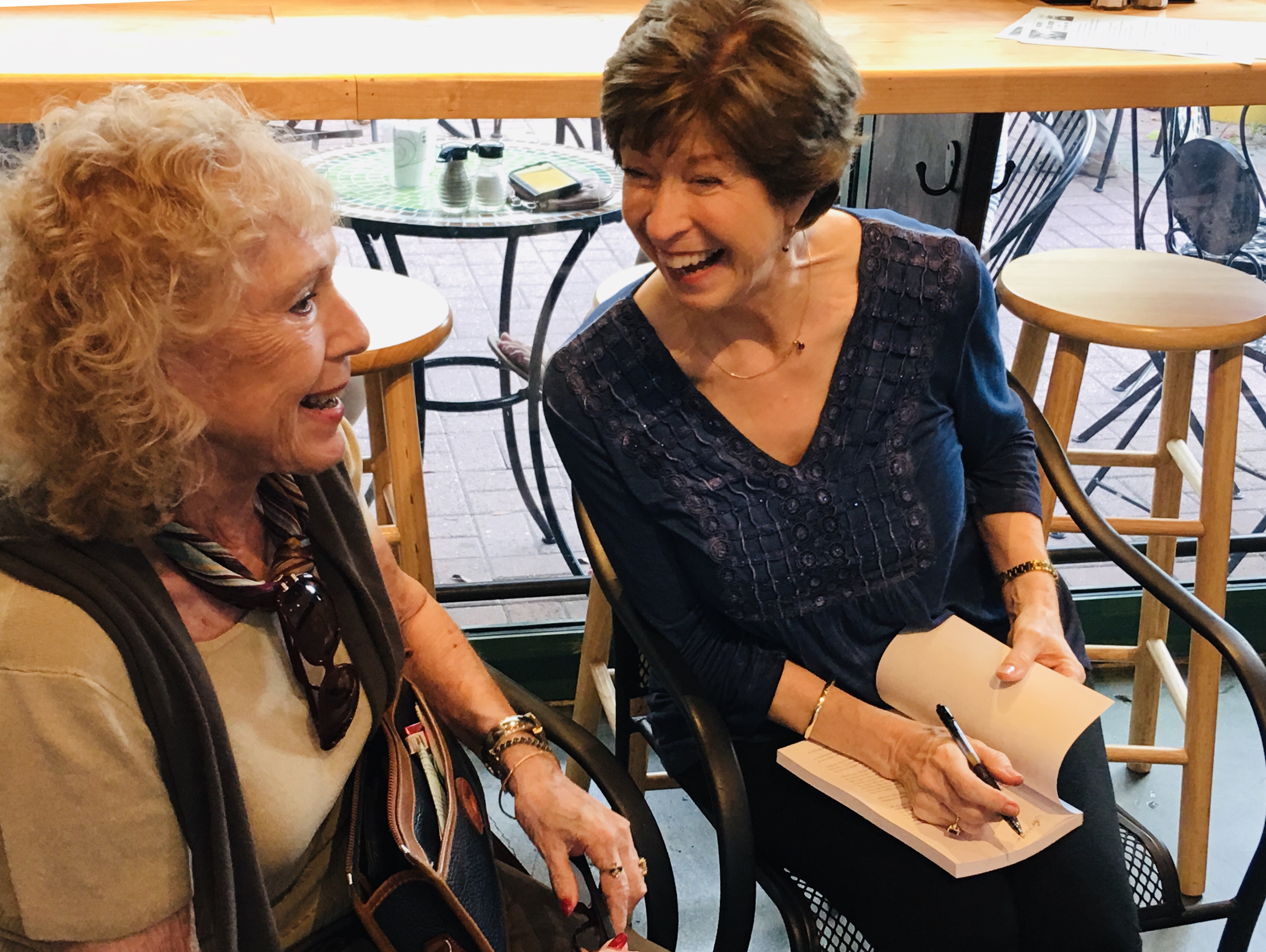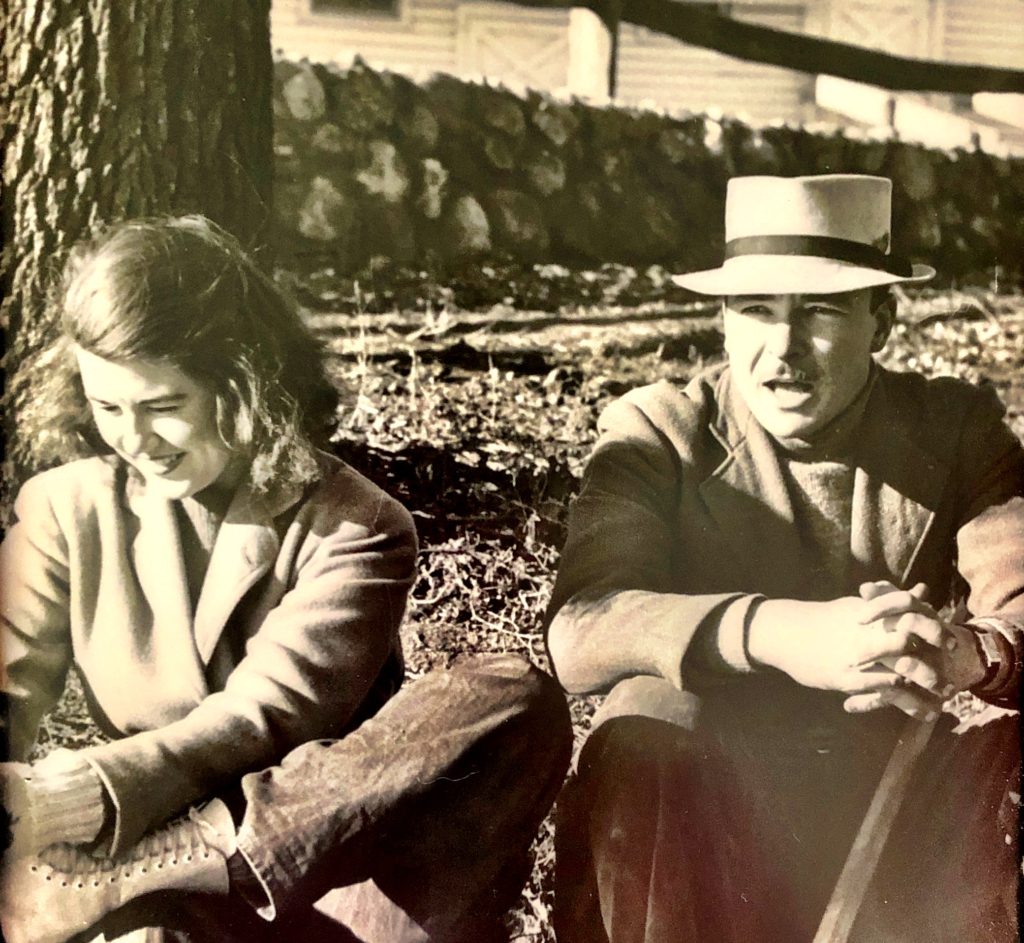
My Mom & Dad Married 9/14/1939 Cece and Ted Mohlman
If you grew up in a dysfunctional family, my story will be familiar. I only hope that you’ve found the people and programs to help you heal. Here’s how I began to grow out of the negative thoughts and worries from my childhood. (Excerpted from 50 Ways to Worry Less Now.)
My Mom and Dad: “Doin’ the Best They Can”
I was the fourth child of a charming, alcoholic father and a mother who spent her life worrying about him. Many evenings we’d find Mom lying alone on her bed reading a book, gloomy and sad as she listened for the crunch of Dad’s car tires on the driveway. Too often, that sound never came and she sank lower and lower into her sadness.
Partying with friends was the mainstay of my parents’ lives. The stereo got louder and louder as the drinks got stronger and stronger. Some nights, after the guests had left, we were awakened by crashes and Mom’s screams. I lay frozen in my bed as the whispered lie “I’ll never be safe” sank into my bones.
What Is A Dysfunctional Family, Anyway??
In alcoholic and other dysfunctional families, the dominant messages are: Don’t feel, don’t trust, and don’t tell anyone about it. The “it” is the proverbial “elephant in the room”; although everyone is aware of it, they quickly deny it.
In the absence of honest communication about my dad’s drinking, we children began to invent stories to explain the swirling tension in the air. I birthed a new whispered lie: “I must be a bad person if my parents won’t give me time or attention.”
Family alcoholism isn’t the only condition that can stunt a child’s sense of security and worth. Any trauma that causes ongoing despair can become the elephant in the room: death of a family member, physical impairment, mental illness, gambling, drug addiction, violence, chronic illness, foster care, sexual abuse, or neglect. In such cases, the troubling situations consume the family’s attention, and the emotional needs of the children often go unmet. These deficits launch the child on a lifelong search for love and safety without a road map.
According to Janet G. Woititz’s Adult Children of Alcoholics and Tian Dayton’s The ACoA Trauma Syndrome: The Impact of Childhood Pain on Adult Relationships, adult children of alcoholics and trauma victims tend to share several characteristics
- Fear losing control; are overly responsible; have trouble relaxing and having fun;
- Fear their emotions or feelings; confuse pity with love; have difficulties with intimacy;
- Fear abandonment; constantly seek approval;
- Self-criticize; have low self-esteem;
- Deny reality; avoid conflict; adopt a victim mentality; become comfortable living in chaos and drama;
- Overreact to outside changes; when afraid, see everything and everyone in extremes;
- Adopt compulsive behaviors; have an attraction to compulsive personalities; and
- Suffer from frequent physical illness and an accumulation of grief.
Healing Begins (with A Lot of Help from My Friends!)
When I first learned about these tendencies, I felt hopeless. Then I heard these empowering words: I am not to blame for what happened to me as a child; but I am responsible for healing my past. For more information and support, see https://adultchildren.org/
After I got sober in 1986 and the fog cleared, I sought therapy for many of the tendencies that had been screwing up my life. My therapist suggested I attend Twelve-Step meetings called “Adult Children of Alcoholics.” In those meetings, I felt uncomfortable as others talked about experiences similar to mine, but at the same time I felt a giddy sense of relief. I realized I wasn’t alone; and if others had the courage to recover, so could I.
As I continued to work with my therapist, I discovered that I still felt, deep inside, like a defenseless little girl. In an inner-child healing exercise, I visualized locking my mind’s critical voices in a lead-lined vault. I then greeted my imaginary little girl with love and asked if she would talk with me.
As my therapist coached me, I told my inner child I loved her and praised her for being so brave in our crazy home. I thanked her for inventing strategies to keep us secure, and explained that she could let go of her perfectionism and other defenses. Finally, I assured her that she could trust me—her adult self, powered by love—to keep us safe and happy.
These exercises helped me see my divorces and addictions as merely misguided attempts to find love and security. I let go of my self-condemnation and began to believe I could be happy. Since then, I’ve never stopped growing.
An Invitation
If you’ve had experiences similar to those described here, I wish you courage and freedom from the past. I welcome you to comment on your journey of healing. and how your found support. For more information, see https://adultchildren.org/
NOTE: This article is taken from Chapter 5 of my book, 50 Ways to Worry Less Now, which shares the entire story and the tools I discovered as I grew into the happy, healthy woman I am now. This growth has been one of the greatest miracles of my life, but I did not do it alone.
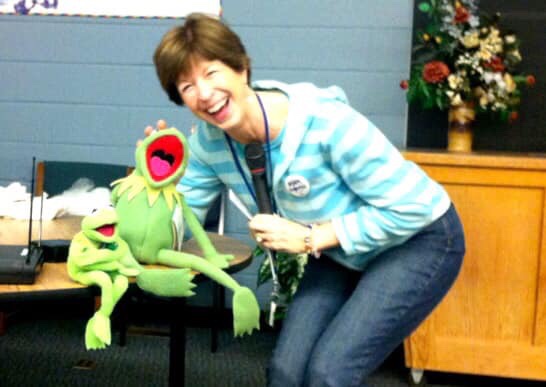
Gigi Langer holds a PhD from Stanford University in Psychological Studies in Education. She’s an award-winning teacher and writer with 33 years clean and sober. Her new book, 50 Ways to Worry Less Now won the National Indie Excellence Award and rates 4.8 stars on Amazon. The AUDIOBOOK is due in mid-September 2019 (Audible, Amazon, i-tunes). Tune in at GigiLanger.com
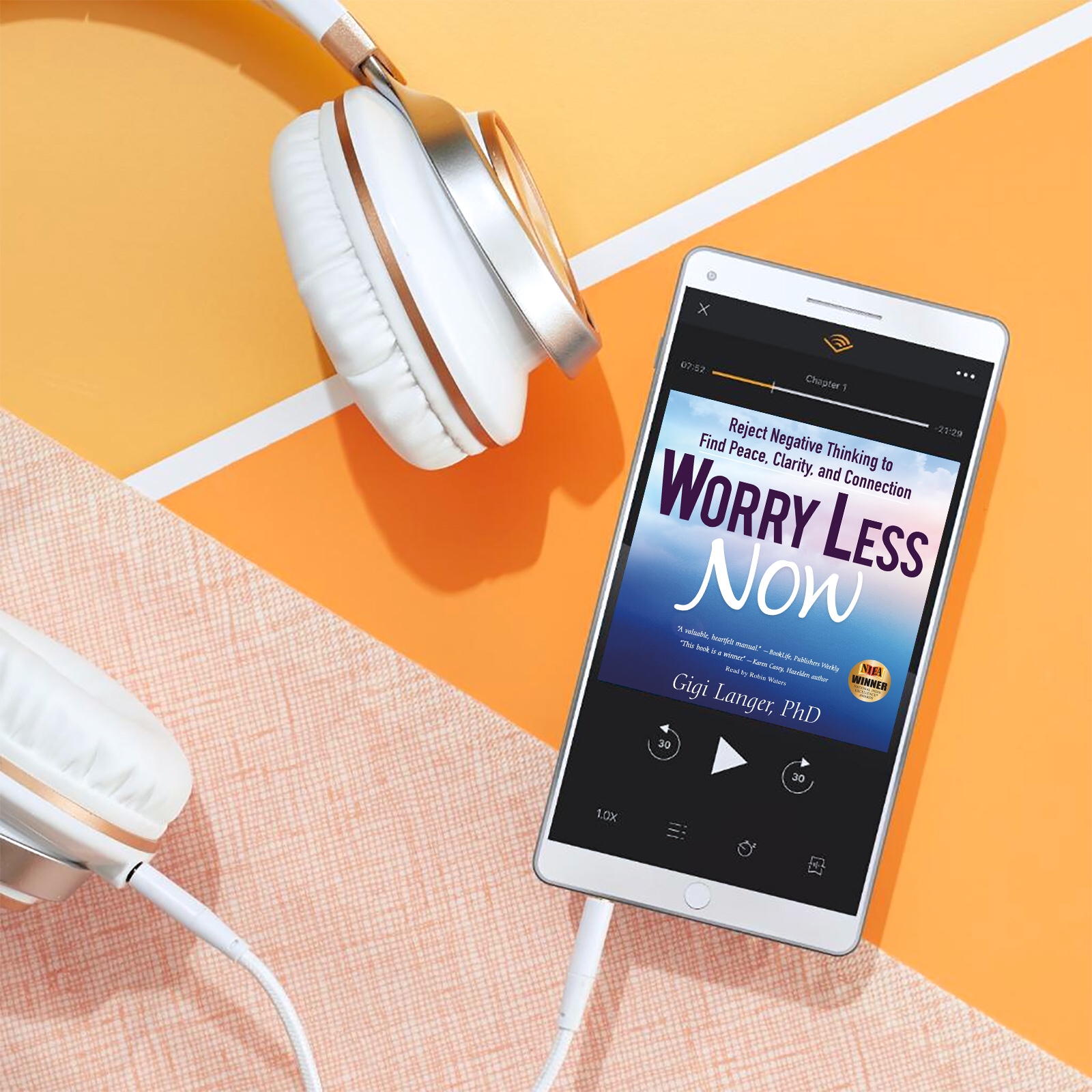
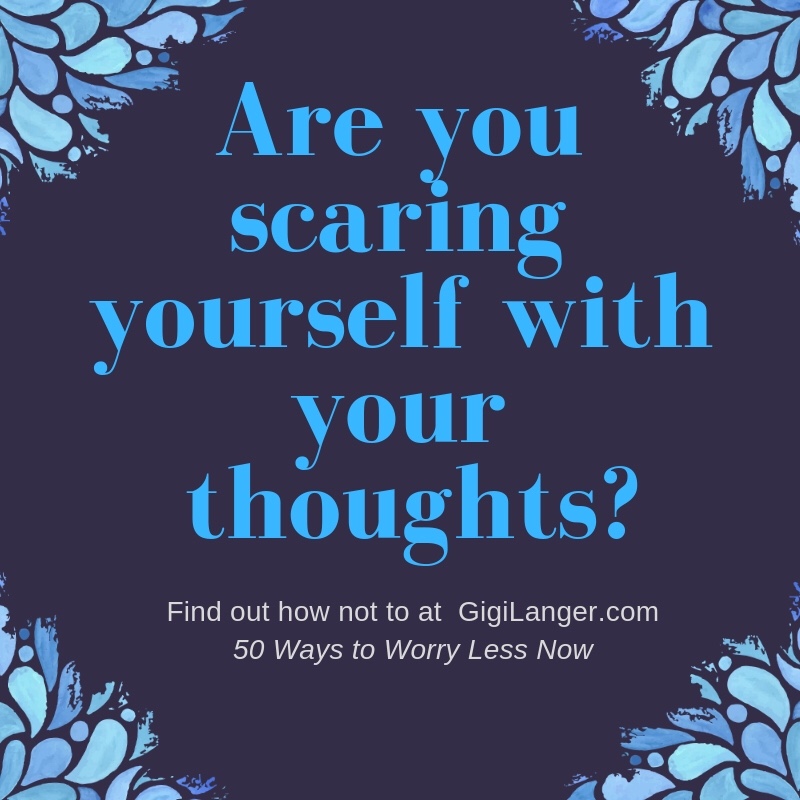
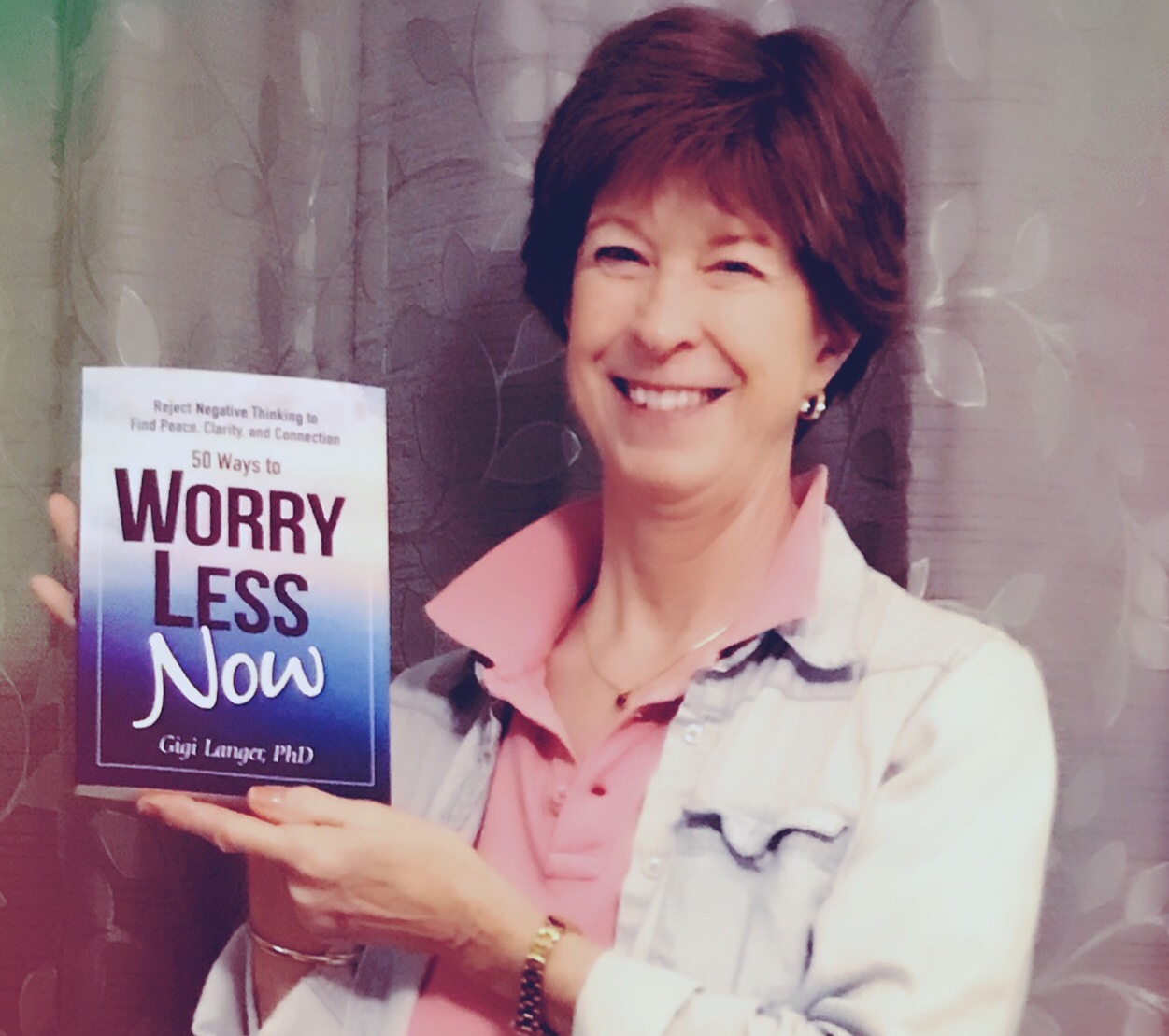
 Do you have a voice in your head that incessantly whispers lies of impending doom or replays past events in the hope of changing them?
Do you have a voice in your head that incessantly whispers lies of impending doom or replays past events in the hope of changing them? 